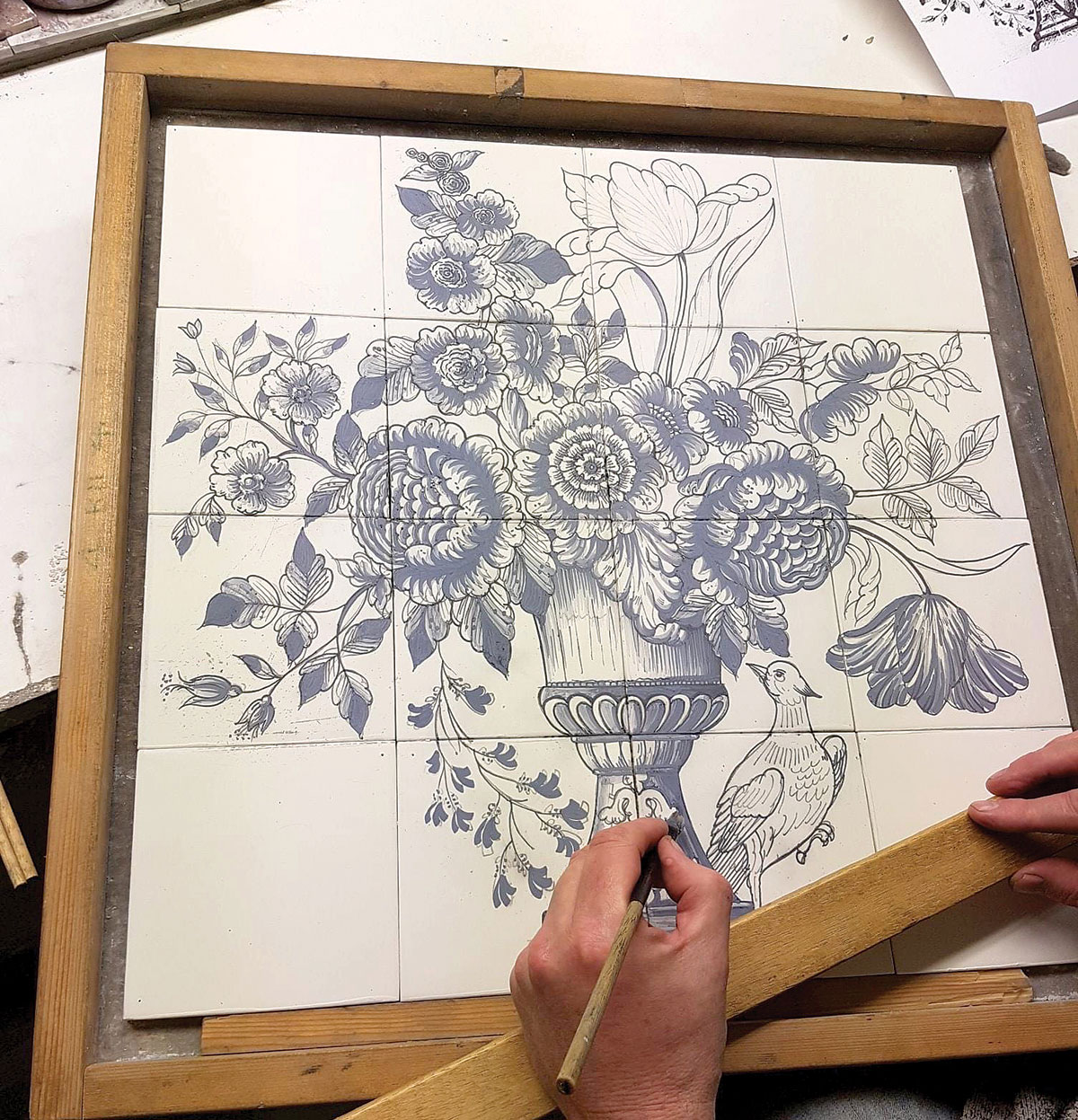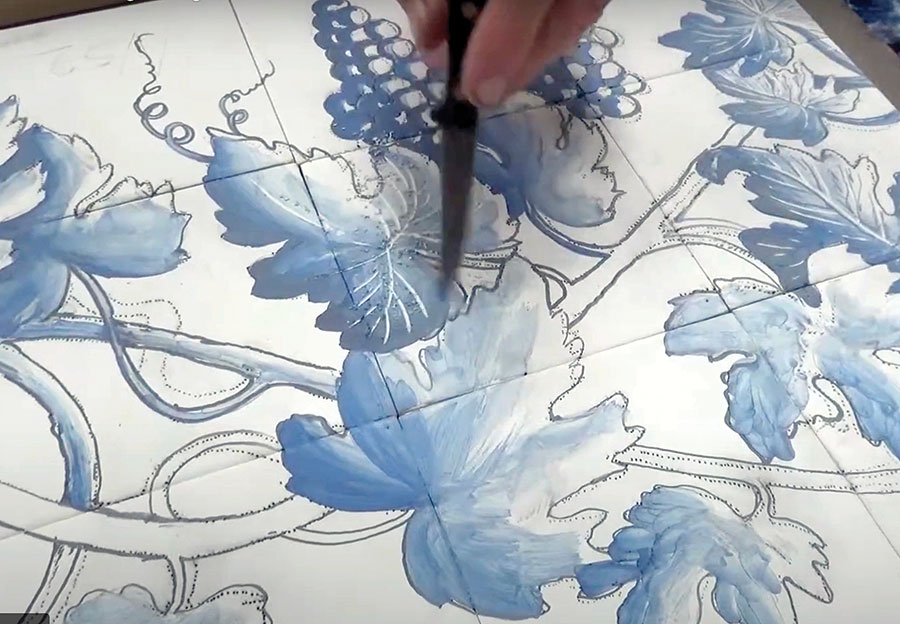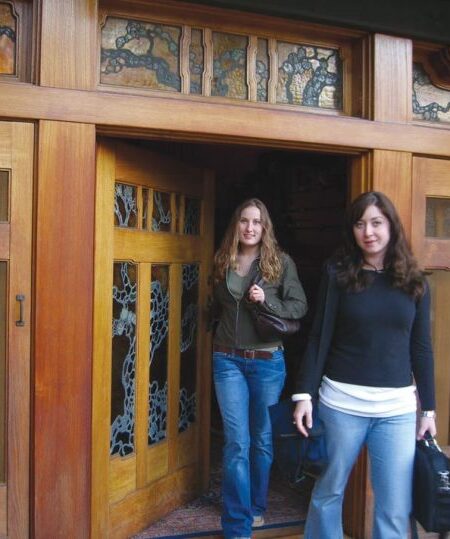This content was originally published on OldHouseOnline.com and has been republished here as part of a merger between our two businesses. All copy is presented here as it originally appeared there.

Recently rebranded under its new name, Dutch Tile, owned by Bibby (Barbara) Veerman, imports hand-painted tiles. Historical methods and designs may date to the 16th and 17th centuries for the tiles handmade in The Netherlands by Harlinger, another family-owned company.
Famous for scenes depicting rural Renaissance Holland, the tiles begin with soft clay that’s kneaded and rolled, then cut into slabs using a knife and traditional wooden mold with nails in the corners. The nails leave characteristic indentations in the blanks, which are allowed to dry, then fired.

RIGHT: While the tin glaze is still damp, it’s covered with a cartoon of the design, which is dusted with a sponge filled with charcoal.
Fired “biscuits“ then get a tin glaze, which creates the nuanced background color. Now the magic begins. While the biscuit is still wet, a cartoon with finely pierced contours is placed over it and dusted with a sponge filled with charcoal powder. The powder creates a dotted line that’s the only guidance for the painter, who draws in lines with a thin drawing brush and then fills in with colored glaze tinted with metal oxides. Although the framework of the design is fixed by the outline, the individual style of each painter is recognizable.

The painted glazes fuse with the tin glaze during a second firing. If the tiles will have a crackle finish, they’ll get a top glaze and third firing.
Tiles may be seen in showrooms around the country, but customers and designers alike are welcome to order directly from Dutch Tile. As the catalog of traditional designs runs more than 300 pages, direct conversations with Bibby or her staff are recommended to help in choosing a pattern.

Other considerations come into play: Do you prefer a traditional white background, or bright white? Crackle glaze? While blue is the most recognizable palette, sepiaand polychromy have been ap-plied to Dutch-made tiles forcenturies. Finally, you may chooseamong corner designs. Options include whimsically named patterns: spiderhead, Biblical, ox-head, tulip.
Dutch Tile
Litchfield, Connecticut
(201) 290-9347
dutchtile.com










